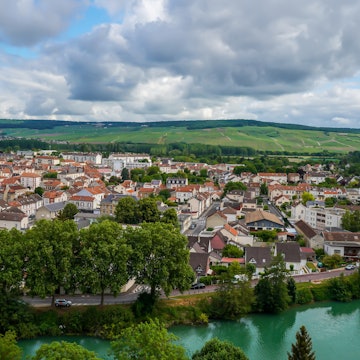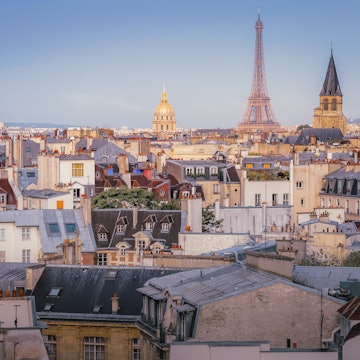

The shops, streets and cafes in Marseille’s Le Panier district might be at their buzziest in summer but are intriguing any time of year. Matt Munro/Lonely Planet
Even though summer might be the traditional time to visit France's second largest city - its big blue sea toasty warm and urban beaches sizzling with parties and events - Marseille, with its mix of music, nature and art, is a draw at any time of year. With its intriguing portfolio of museums, covering everything from fine art, archaeology and history to subaquatic sculpture, street art and soccer, as well as a festival season that runs year long, it's a must-add destination to any globe trotting wish list.
Throw in the city’s impressive cultural agenda – from sacred to electronic music and hip hop, music festivals are multicultural Marseille’s lifeblood – and the region’s bumper harvest of seasonal produce, there is so much to see, do and explore. For nature lovers in town for horticultural exotica or seafaring adventure along a bewitching coastline beaded with cliffs and coves, spring and fall are best. If you’re a sea urchin aficionado the winter months are best. To decide your peak season, this is what you need to know...

June to September are best for beaches, festivals and parties
Weather in Marseille in summer: The South of France, and Marseille in particular, is the sunniest and hottest region in France, with average daytime temperatures habitually reaching highs of 30°C (86°F) during June, July and August. In September the temperatures start to cool down but rarely fall below about 25°C (77°F).
From July onwards, school’s out for summer and the urban beaches are packed with holiday makers. The summer festival season is in full swing, with rooftop concerts and dance parties aplenty. Movies are screened in parks, squares and courtyards; and rooftop venues and beach clubs buzz until the wee hours. Watch for top-drawer concerts at the beautiful, open-air Théâtre Silvain amphitheater and world champion pétanque players spinning balls in Parc Borély. Hotels and hostels are fully booked, with rates at a premium.
Freshly harvested garlic is piled high in woven garlands on street stalls at the Vieux Port’s ancient garlic fair – a handful of saffron farmers sell their wares too. World music spills across the streets of ethnically diverse Noailles and live jazz makes toes tap at a quartet of atmospheric outdoor venues, including Centre de la Vieille Charité, MuCEM and Abbaye St-Victor.
Key events in June and July include Foire à’Ail (Garlic Fair), Festival du Soleil, Festival de Marseille (mid-June–mid-July), Marseille Jazz des Cinq Continents (June–early August), Watts Summer Festival, Marsatac : Ciné en Plein Air (July-late September), Au Large! Festival, Mondial La Marseillaise à Pétanque, Bastille Day (14 July) and Pride Marseille
In August the French take vacation and many locals head out of the city. But this is one of the busiest times to be in Marseille, with events galore, an infectious party atmosphere and the start of the new football season (through to May). In nearby Cassis, the first grapes are harvested at the end of the month.
In September walking trails in the Parc National des Calanques begin to reopen as the risk of wildfire subsides. Contemporary sounds by globetrotting artists rock the uber-cool rooftop of Friche La Belle de Mai. Key happenings in September include the Festival MIMI, and the Foire Internationale de Marseille .
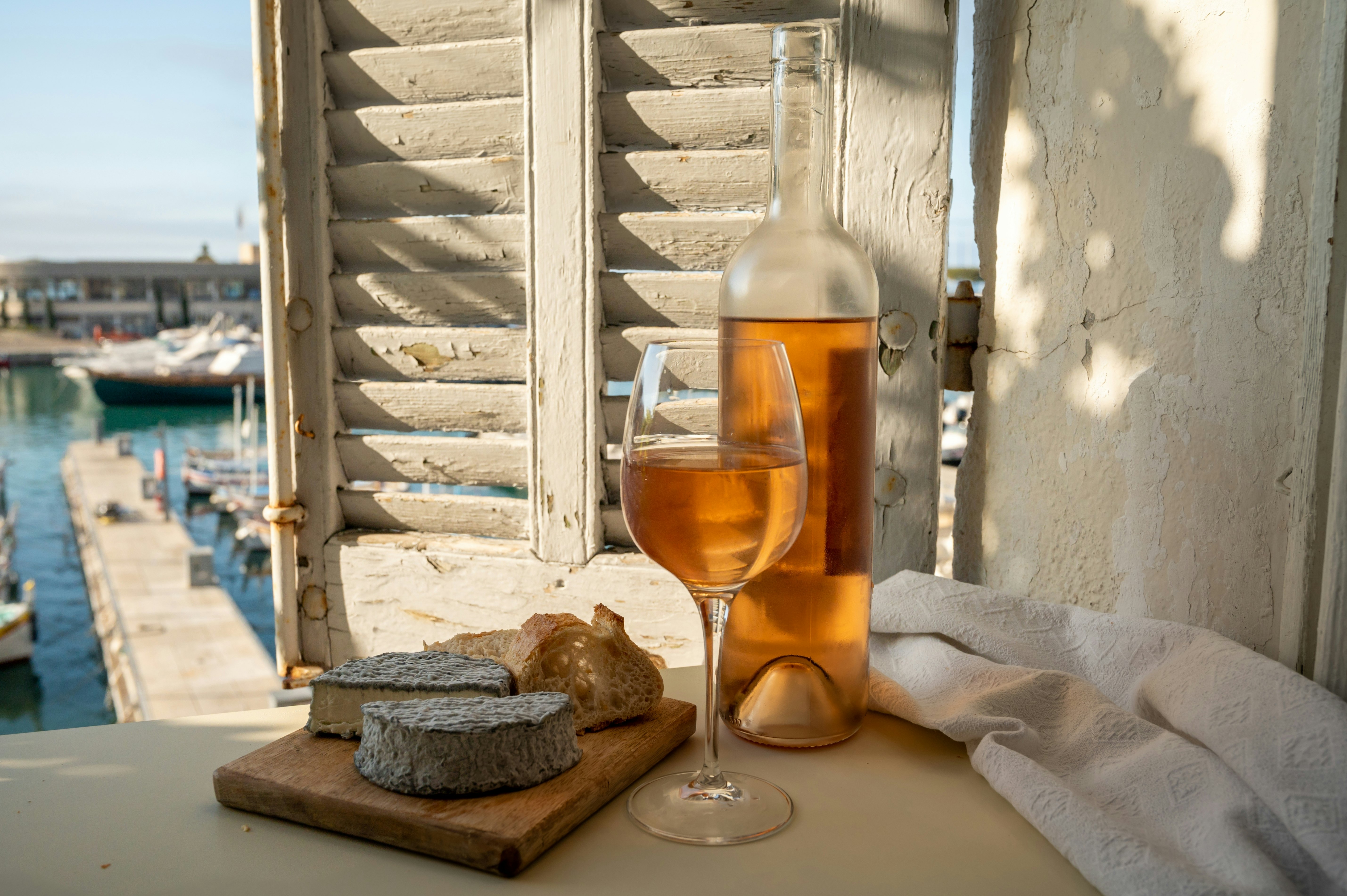
In October and November you can visit "sans le crowd"
Weather in Marseille in autumn: Take a trip from October onwards and temperatures start to become much more manageable, with temperatures reaching about 20°(68°F) and the sea remaining warm enough for swimming. By November, the days may be shortening, but the glow of the autumn sun is a delight. It is still warm enough to swim and beaches are blissfully empty.
The city’s oldest craft fair, with stalls selling Marseillais santons (thumbnail-sized, terracotta figurines for Christmas cribs), opens with a flourish at the Vieux Port – as it has done since 1803. This is the traditional time of year to eat pieds et paquets (sheep’s trotters and stuffed tripe). Beach restaurants and bars, rooftops and seaside addresses close for winter. Mark your diary for the Foire aux Santons and the Fiesta des Suds.
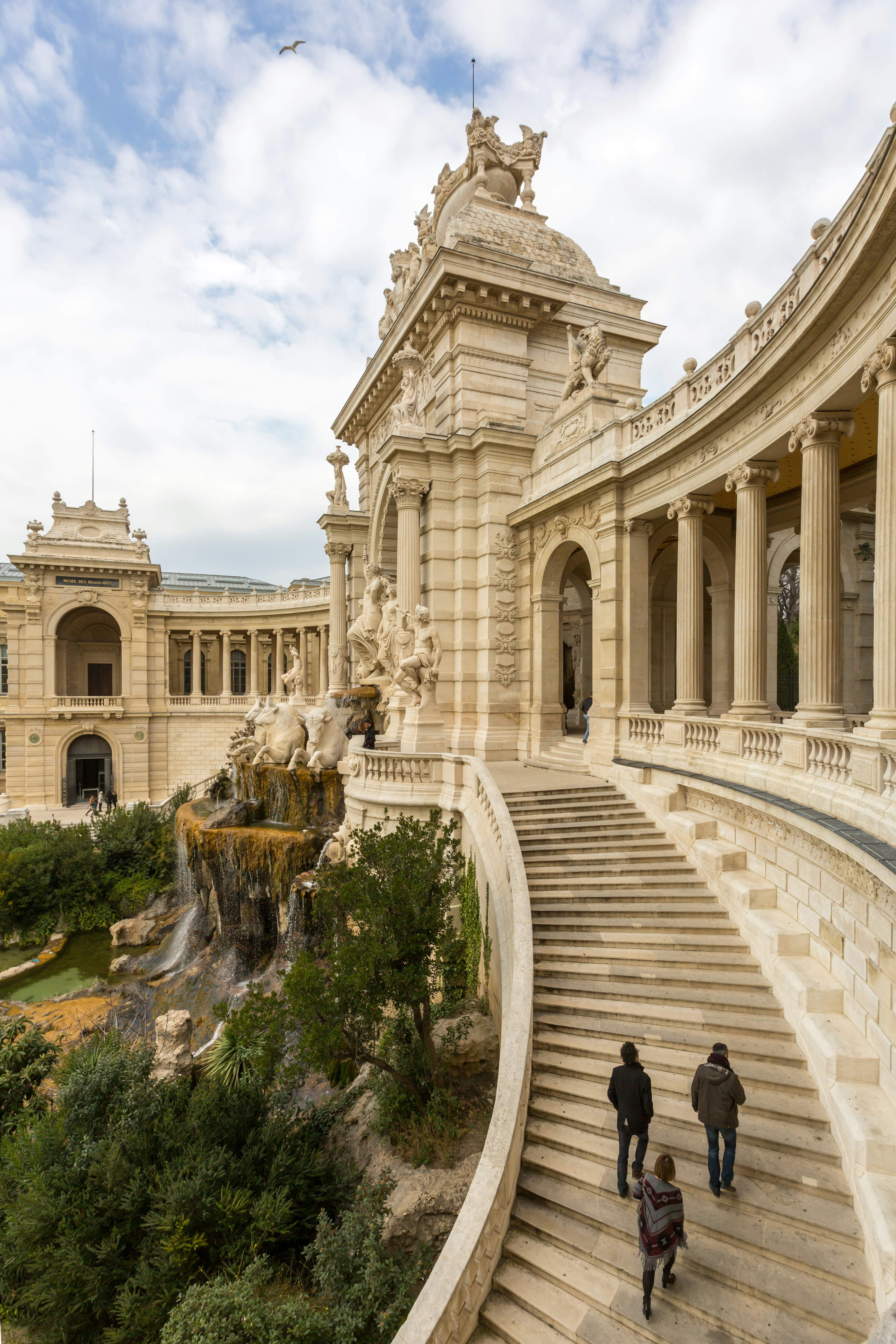
From December to February go sightseeing on the cheap
Weather in Marseille in winter: While it does get chilly in the winter months, with temperatures ranging from anything between 11° (52°F) and 3° (37°F), with the very occasional snow flurry, Marseille experiences milder winters than most other parts of the country. The days are cold and crisp with China-blue skies. Lunch in the sun alfresco is possible, even in January.
Families celebrate Christmas with midnight Mass, Provençal chants, 13 desserts and nativity scenes. Santonniers (santon makers) are celebrated with their own Mass, either at the tail end of December or early January. If you missed the city’s emblematic santon fair (tiny, hand-crafted crib figurines) before Christmas, you can catch it now.
By February, locals button down the hatches and hibernate. The few tourists around revel in exploring the near-deserted streets of Le Panier as well as the museums and monuments. Hotel rates are at their lowest, and attractions open shorter hours. This can be a cold month, but the oursin (sea urchin) season is on hand to comfort and thrill. The pale-orange roe is the star of every seafood restaurant menu and weekend festivals celebrating the spiny-balled delicacy fill nearby Carry-le-Rouet with gourmet gaiety. Pilgrims weave their way up to Abbaye St-Victor at dawn bearing baskets of traditional Marseillais navettes (orange blossom biscuits) to be blessed at La Chandeleur. Key events include at this time of year include Les Oursinades (the festival of sea urchins) and the church festival of La Chandeleur (or Candlemas).
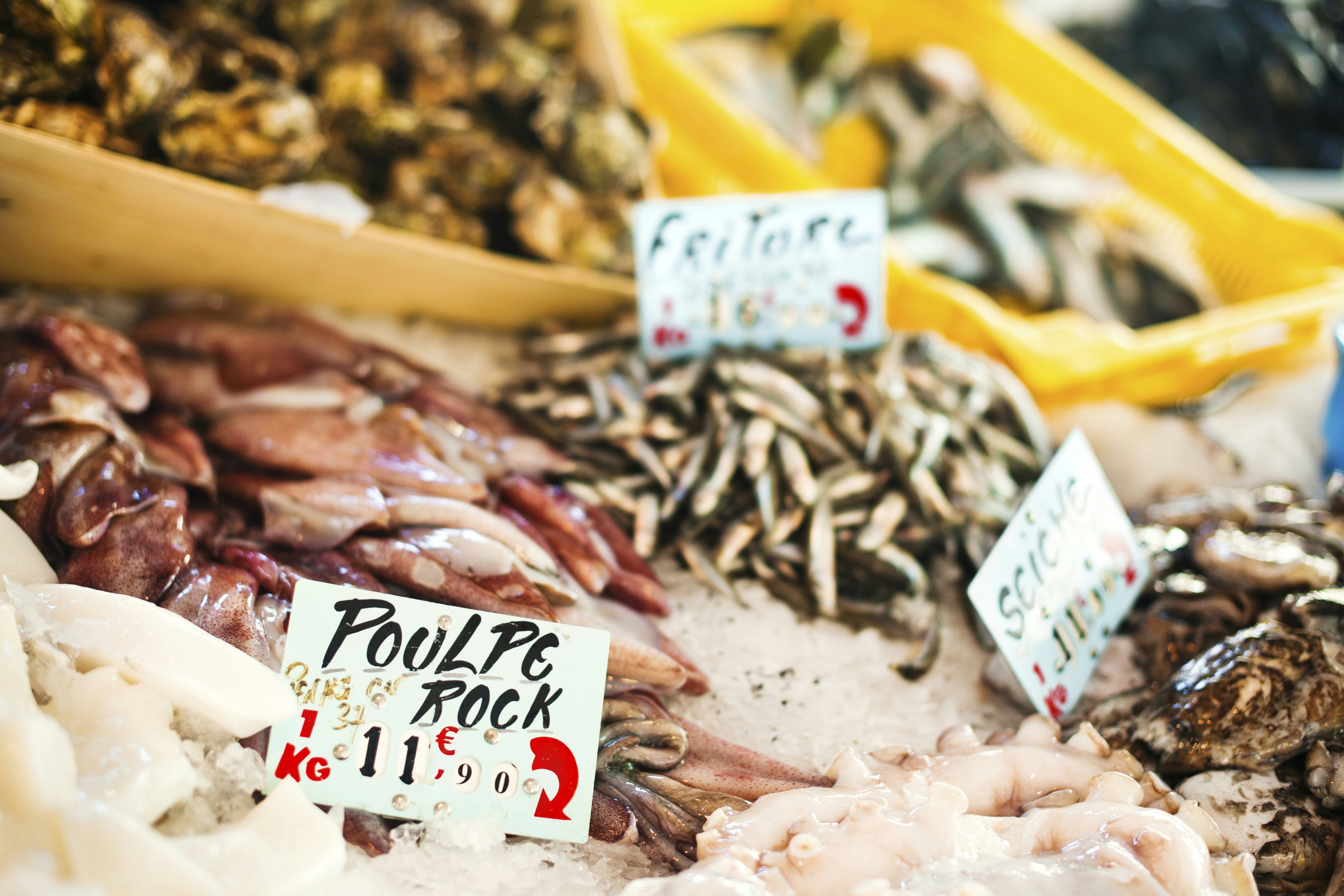
March, April and May mean carnivals, sailing and bountiful markets
Weather in Marseille in spring: As the days lengthen, temperatures in Marseille can vary wildly, from between 14° (57°F) and 23° (73°F) on a sunny afternoon, with night time temperatures still dropping as low as 5° (41°F). Beautiful sunny days are however a given in late spring where temperatures reach around 24° (75°F) on average.
With clocks springing forward at the tail end of the month, the days feel longer and spring is in the air. Decorated floats and costumed revelers parade along streets around the Plages du Prado and Parc Borély during carnival’s exuberant street processions during the Carnaval de Marseille.
The sailing season opens, adding picture-postcard white sail boats to Marseille’s panoramic bay views. Days are comfortably warm, café and restaurant terraces pop up like mushrooms after the rain, and cultural happenings return to the stage. Key events include the Massilia Cup, Semaine Nautique Internationale de Méditerranée (SNIM), Festival de Musique Sacrée, Festival International Music et Cinéma (MCM) and the Festival Flamenco Azul.
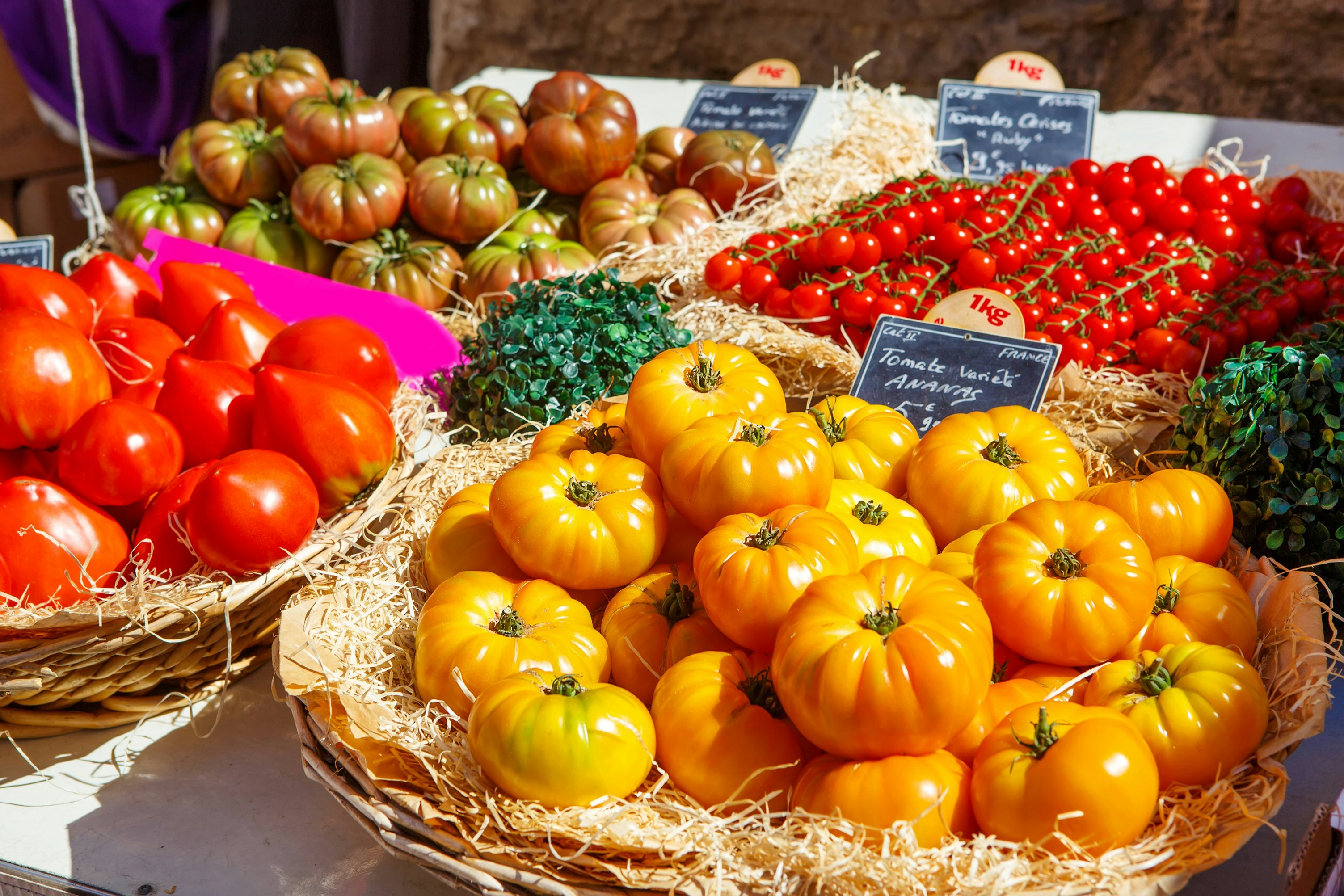
In late spring open-air food markets are piled high with early summer produce from all over Provence, including ruby-red cherries, melons and syrupy figs from the nearby Vaucluse. Muguets ("lily of the valley" blooms) are sold on street corners to mark 1 May. Events to plan for include the Fête de la Nature, Salon des Vignerons et de la Gastronomie and the Rencontres du Cinéma Sud Américain.








